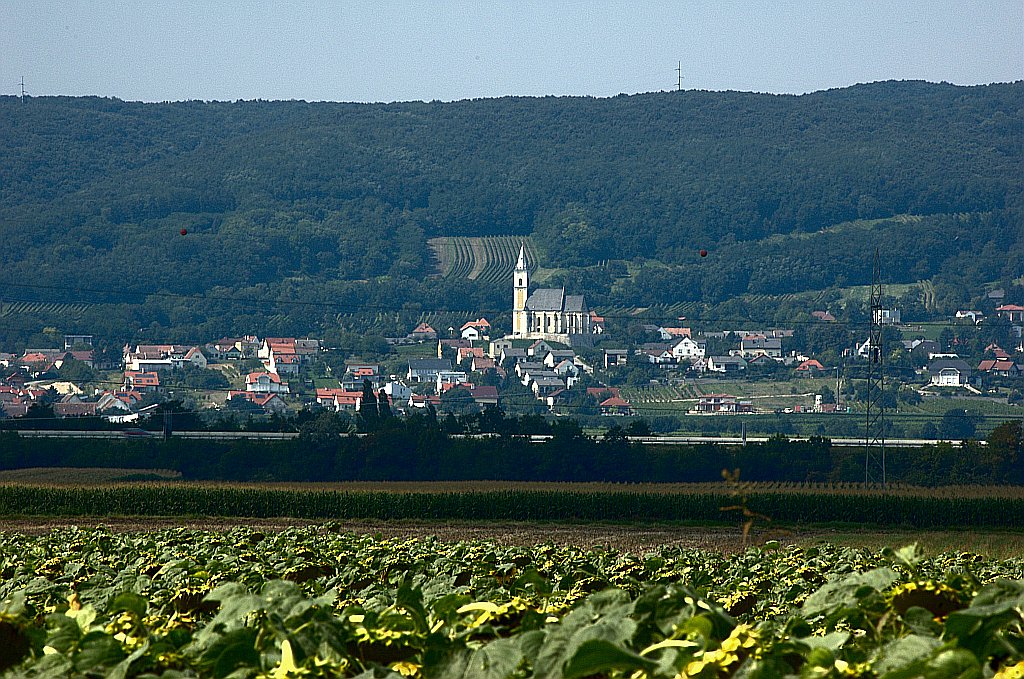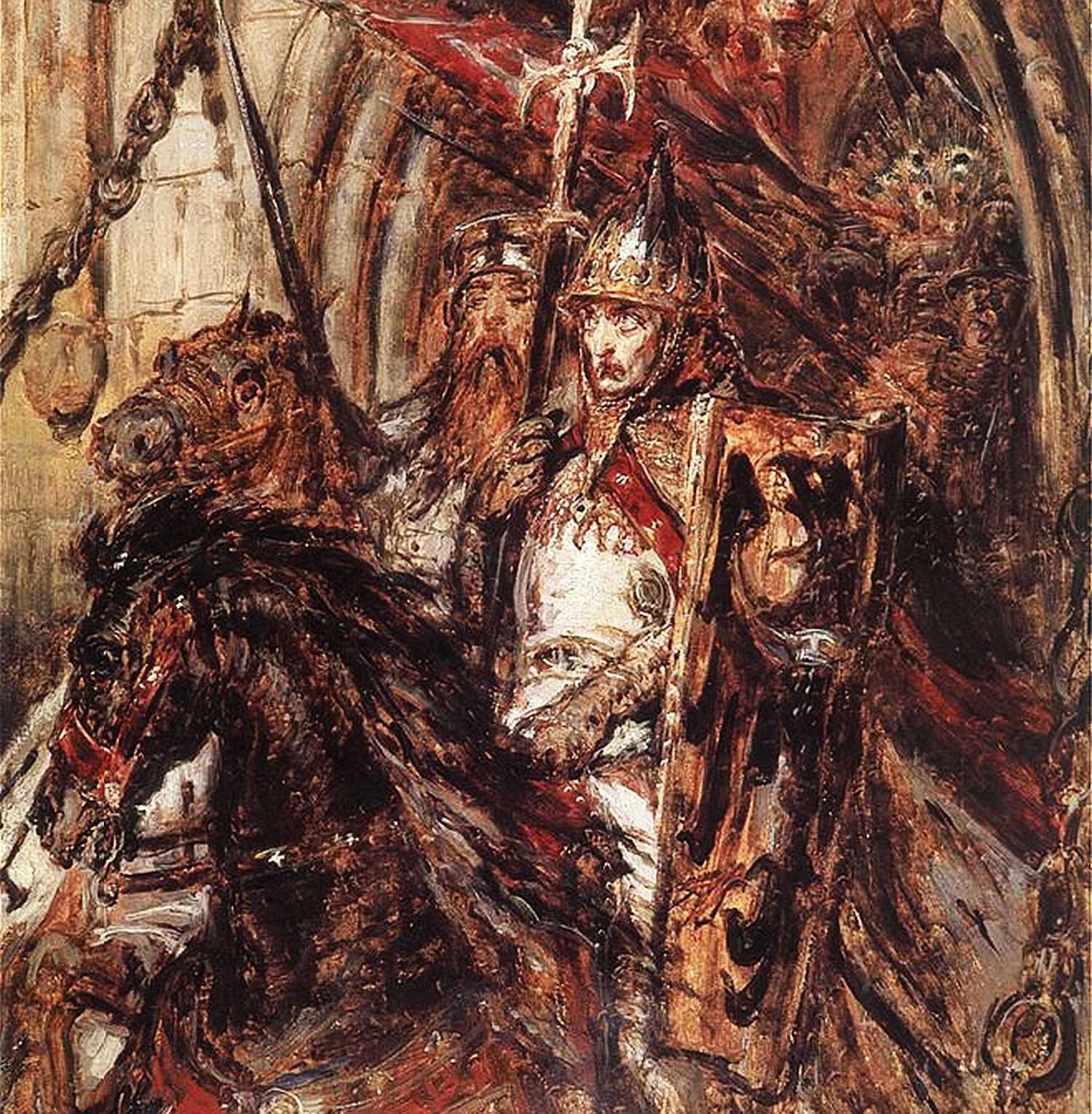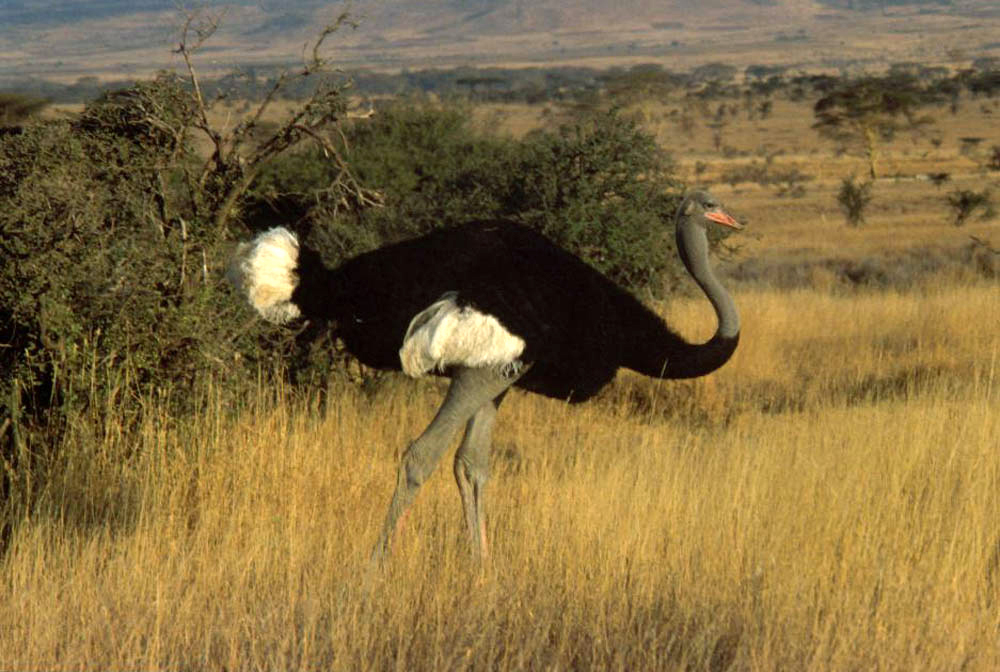|
Bistrița
(; , archaic , Transylvanian Saxon: , ) is the capital city of Bistrița-Năsăud County, in northern Transylvania, Romania. It is situated on the Bistrița River. The city has a population of 78,877 inhabitants as of 2021 and administers six villages: (; ), (; ), (; ), (; ), (until 1950 ; ; ) and (; ). There is a project for the creation of a metropolitan area that will contain the municipality of Bistrița and 3 surrounding localities ( Șieu-Măgheruș, Budacu de Jos, and Livezile), whose combined population would be over 91,600 inhabitants. Etymology The town was named after the River, whose name comes from the Slavic word meaning 'fast-moving water'. History The earliest sign of settlement in the area of is in Neolithic remains. The Turkic Pechenegs settled the area in 12th century following attacks of the Cumans. Transylvanian Saxons settled the area in 1206 and called the region . A large part of settlers were fugitives, convicts, and poor people looking ... [...More Info...] [...Related Items...] OR: [Wikipedia] [Google] [Baidu] |
Bistrița-Năsăud County
Bistrița-Năsăud () is a county (județ) of Romania, in Transylvania, with its capital city at Bistrița. Name In Hungarian language, Hungarian, it is known as ''Beszterce-Naszód megye'', and in German language, German as ''Kreis Bistritz-Nassod''. The name is identical with the county created in 1876, Beszterce-Naszód County () in the Kingdom of Hungary (the county was recreated in 1940 after the Second Vienna Award, as it became part of Hungary again until 1944). Except these, as part of Romania, until 1925 the former administrative organizations were kept when a new county system was introduced. Between 1925–1940 and 1945–1950, most of its territory belonged to the Năsăud County, with smaller parts belonging to the Mureș County, Mureș, Cluj County, Cluj, and Someș County, Someș counties. Geography The county has a total area of . One third of this surface represents the mountains from the Divisions of the Carpathians, Eastern Carpathians group: the Țibleș Mo ... [...More Info...] [...Related Items...] OR: [Wikipedia] [Google] [Baidu] |
Nösnerland
The Nösnerland (, also known as ''Nösnergau''; ; ) is a historic region of northeastern Transylvania in present-day Romania centered between the Bistrița and Mureș rivers. In today's administrative boundaries, it is located in southern Bistrița-Năsăud County and north-central Mureș County. History Beginning in the 12th century and increasingly in the 13th–14th centuries, Hungarian kings invited German colonists (mainly from present-day Luxembourg and the adjacent areas in western contemporary Germany) to settle in the then eastern lands of the Kingdom of Hungary; these German settlers became collectively known as the Transylvanian Saxons (). The Saxons in the southeast settled in the Burzenland, while the settlers in the northeast established towns along the Bistrița and Mureș rivers beginning in the early 13th century. As the latter settlers' first major town in the area was Nösen on the Bistrița in 1206, the surrounding area became known as the Nösnerland. Th ... [...More Info...] [...Related Items...] OR: [Wikipedia] [Google] [Baidu] |
Bistrița (Someș)
The Bistrița (; Hungarian: ''Beszterce'') is a river in the Romanian region of Transylvania, Bistrița-Năsăud County. It is sometimes referred to as ''Bistrița ardeleană''. Near the city of Bistrița (at the village Sărata) it flows into the Șieu, a tributary of the Someșul Mare. Its length is and its basin size is . The upper reach of the river, upstream of the junction with the Bârgău in the village of Prundu Bârgăului is also known, locally, as ''Bistricioara''. Primăria Tiha Bârgăului Towns and villages The following towns and villages are situated along the river Bistrița, from source to mouth: Colibița,[...More Info...] [...Related Items...] OR: [Wikipedia] [Google] [Baidu] |
Transylvanian Saxons
The Transylvanian Saxons (; Transylvanian Saxon dialect, Transylvanian Saxon: ''Siweberjer Såksen'' or simply ''Soxen'', singularly ''Sox'' or ''Soax''; Transylvanian Landler dialect, Transylvanian Landler: ''Soxn'' or ''Soxisch''; ; seldom ''sași ardeleni/transilvăneni/transilvani''; ) are a people of mainly Germans, German ethnicity and overall Germanic peoples, Germanic origin—mostly Luxembourgers, Luxembourgish and from the Low Countries initially during the medieval Ostsiedlung process, then also from other parts of present-day Germany—who settled in Transylvania in various waves, starting from the mid and mid-late 12th century until the mid 19th century. The first ancestors of the Transylvanian 'Saxons' originally stemmed from Flanders, County of Hainaut, Hainaut, Landgraviate of Brabant, Brabant, Liège, County of Zeeland, Zeeland, Moselle, Duchy of Lorraine, Lorraine, and County of Luxembourg, Luxembourg, then situated in the north-western territories of the Holy R ... [...More Info...] [...Related Items...] OR: [Wikipedia] [Google] [Baidu] |
Transylvania
Transylvania ( or ; ; or ; Transylvanian Saxon dialect, Transylvanian Saxon: ''Siweberjen'') is a List of historical regions of Central Europe, historical and cultural region in Central Europe, encompassing central Romania. To the east and south its natural border are the Carpathian Mountains and to the west the Apuseni Mountains. Broader definitions of Transylvania also include the western and northwestern Romanian regions of Crișana and Maramureș, and occasionally Banat. Historical Transylvania also includes small parts of neighbouring Western Moldavia and even a small part of south-western neighbouring Bukovina to its north east (represented by Suceava County). Transylvania is known for the scenery of its Carpathian landscape and its rich history, coupled with its multi-cultural character. It also contains Romania's second-largest city, Cluj-Napoca, and other very well preserved medieval iconic cities and towns such as Brașov, Sibiu, Târgu Mureș, Bistrița, Alba Iuli ... [...More Info...] [...Related Items...] OR: [Wikipedia] [Google] [Baidu] |
Șieu-Măgheruș
Șieu-Măgheruș () is a commune in Bistrița-Năsăud County, Transylvania, Romania. It is composed of seven villages: Arcalia (''Árokalja''), Chintelnic (''Kentelke''), Crainimăt (''Királynémeti''), Podirei (''Pogyerej''), Sărățel (''Szeretfalva''), Șieu-Măgheruș, and Valea Măgherușului (''Sajómagyarósi völgy''). The commune lies on the Transylvanian Plateau, on the banks of the river Șieu (river), Șieu. It is located in the central-south part of the county, at a distance of from the town of Beclean and from the county seat, Bistrița. Șieu-Măgheruș is crossed by two Roads in Romania, national roads: (part of European route E58), which joins Dej in Cluj County to Suceava, and (part of European route E578), which joins Reghin in Mureș County to Bistrița; the two roads meet in the village of Sărățel. There is also a train station in Sărățel, which serves the Căile Ferate Române, CFR Căile Ferate Române Line 400, Line 406, that runs from Bistri ... [...More Info...] [...Related Items...] OR: [Wikipedia] [Google] [Baidu] |
Budacu De Jos
Budacu de Jos (; ) is a commune in Bistrița-Năsăud County, Transylvania, Romania. It is composed of five villages: Budacu de Jos, Buduș (''Alsóbudak'';''Budesdorf''), Jelna (''Kiszsolna''; ''Senndorf''), Monariu (''Malomárka''; ''Minarken''), and Simionești (''Simontelke''; ''Seimersdorf''). Geography The commune is situated on the Transylvanian Plateau, at the foot of the Călimani Mountains. The river Budac (a tributary of the Șieu) flows through the commune. Located in the Nösnerland historic region of Transylvania, Budacu de Jos lies in the south-central part of Bistrița-Năsăud County, south of the county seat, Bistrița. County road DJ172G connects the component villages of the commune, while road DJ173C leads to the city of Bistrița. Demographics At the 2011 census, Budacu de Jos had 2,772 inhabitants, of which 78.97% were Romanians Romanians (, ; dated Endonym and exonym, exonym ''Vlachs'') are a Romance languages, Romance-speaking ethnic group a ... [...More Info...] [...Related Items...] OR: [Wikipedia] [Google] [Baidu] |
Livezile, Bistrița-Năsăud
Livezile (until 1964 ''Iad''; ; ) is a commune located in Bistrița-Năsăud County, Transylvania, Romania Romania is a country located at the crossroads of Central Europe, Central, Eastern Europe, Eastern and Southeast Europe. It borders Ukraine to the north and east, Hungary to the west, Serbia to the southwest, Bulgaria to the south, Moldova to .... It is composed of five villages: Cușma (''Kusma''; ''Kuschma''), Dorolea (''Aszúbeszterce''; ''Klein-Bistritz''), Dumbrava (''Dumbráva''), Livezile, and Valea Poenii (''Bureaka''). References Communes in Bistrița-Năsăud County Localities in Transylvania {{BistriţaNăsăud-geo-stub ... [...More Info...] [...Related Items...] OR: [Wikipedia] [Google] [Baidu] |
Transylvanian Saxon Dialect
Transylvanian Saxon is the native German dialects, German dialect of the Transylvanian Saxons, an ethnic Germans of Romania, German minority group from Transylvania in central Romania, and is also one of the three oldest ethnic German and Geographical distribution of German speakers, German-speaking groups of the German diaspora in Central and Eastern Europe, along with the Baltic Germans and Zipser Germans. In addition, the Transylvanian Saxons are the eldest ethnic German group of all constituent others forming the broader community of the Germans of Romania. The dialect is known by the Endonym and exonym, endonym or just ; in German as , , or (obsolete German spelling: ''Siebenbürgisch Teutsch''); in Transylvanian Landler dialect as ''Soksisch''; in Hungarian language, Hungarian as ; and in Romanian language, Romanian as , , or . Linguistically, the Transylvanian Saxon dialect is very close to Luxembourgish (especially regarding its vocabulary). This is because many ance ... [...More Info...] [...Related Items...] OR: [Wikipedia] [Google] [Baidu] |
Free Royal Town
A royal free city, or free royal city (Latin: ''libera regia civitas''), was the official term for the most important cities in the Kingdom of Hungary from the late 12th centuryBácskai Vera – Nagy Lajos: Piackörzetek, piacközpontok és városok Magyarországon 1828-ban. Budapest, 1984. to the Hungarian Revolution of 1848. The cities were granted certain privileges by the King of Hungary to prevent their control by the Hungarian nobility, hence "royal", and exercised some self-government in relation to their internal affairs and so were "free". From the late 14th century, the elected envoys of the royal free cities participated in the sessions of the Hungarian Diet and so they became part of the legislature. This list also includes cities in the Kingdom of Croatia and the Banate of Bosnia, which were part of the Lands of the Hungarian Crown. The term "royal free city" in the kingdom's languages is as follows: * * * * * * * They had a status similar to the free imperial cit ... [...More Info...] [...Related Items...] OR: [Wikipedia] [Google] [Baidu] |
Mongol Invasion Of Europe
From the 1220s to the 1240s, the Mongol Empire, Mongols conquered the Turkic peoples, Turkic states of Volga Bulgaria, Cumania and Iranian peoples, Iranian state of Alania, and various principalities in Eastern Europe. Following this, they began their invasion into Central Europe by launching a two-pronged invasion of History of Poland during the Piast dynasty, then-fragmented Poland, culminating in the Battle of Legnica (9 April 1241), and the Kingdom of Hungary (1000–1301), Kingdom of Hungary, culminating in the Battle of Mohi (11 April 1241). Invasions were also launched into the Caucasus against the Kingdom of Georgia, the Chechens, the Ingush people, Ingush, and Circassia though they Mongol invasion of Circassia, failed to fully subjugate the latter. More invasions were launched in Southeast Europe against Second Bulgarian Empire, Bulgaria, Croatia in personal union with Hungary, Croatia, and the Latin Empire. The operations were planned by General Subutai (1175–1248) and ... [...More Info...] [...Related Items...] OR: [Wikipedia] [Google] [Baidu] |
Ostrich
Ostriches are large flightless birds. Two living species are recognised, the common ostrich, native to large parts of sub-Saharan Africa, and the Somali ostrich, native to the Horn of Africa. They are the heaviest and largest living birds, with adult common ostriches weighing anywhere between 63.5 and 145 kilograms and laying the largest eggs of any living land animal.Del Hoyo, Josep, et al. Handbook of the birds of the world. Vol. 1. No. 8. Barcelona: Lynx edicions, 1992. With the ability to run at 70 km/h (43.5 mph), they are the fastest birds on land. They are farmed worldwide, with significant industries in the Philippines and in Namibia. South Africa produces about 70% of global ostrich products, with the industry largely centered around the town of Oudtshoorn. Ostrich leather is a lucrative commodity, and the large feathers are used as plumes for the decoration of ceremonial headgear. Ostrich eggs and meat have been used by humans for millennia. Ostrich ... [...More Info...] [...Related Items...] OR: [Wikipedia] [Google] [Baidu] |



